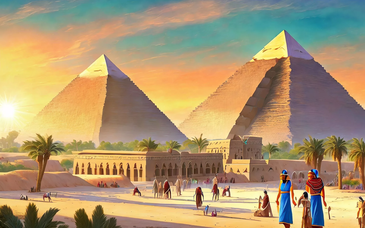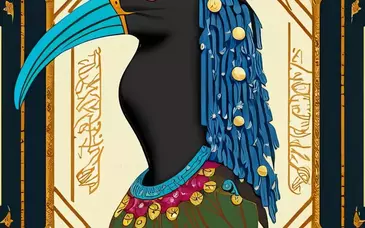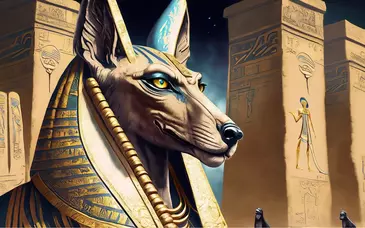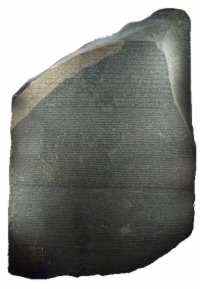 | The collection of the British Museum is one of the largest and most famous in the world. The range and variety of items on display is impressive, although the damage sustained in the original monuments when the exhibits were removed does not bear thinking about. This section gives a small sample of the items on display. |
Granite Statue Of Ramesses II When you first enter the lower Egyptian gallery you immediately get some idea of the scale of Egyptian Monuments. The gallery contains many columns and statues plundered from various sites, none more imposing than this granite statue of the Pharaoh Ramesses II from his mortuary temple, the Ramesseum in western Thebes. The hole in the shoulder was drilled by French engineers in an earlier failed attempt to move the statue. 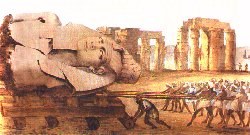 | 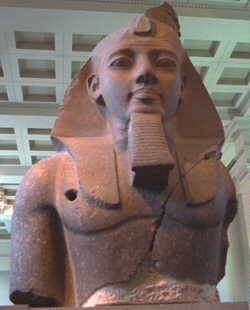 |
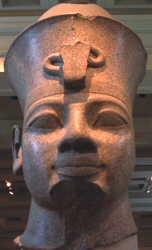 | Head Of A Statue Of Amenhotep III One of the most prolific builders in the Ancient Egyptian world was the 18th Dynasty Pharaoh Amenhotep III. The British Museum houses several statues of this king. This head came from Karnak. Amenhotep was the father of the Heretic Pharaoh Akhenaten. For more information see the Akhenaten Gallery |
Seated Statue Of Amenhotep III The entrance to the Egyptian Statue gallery is flanked by two life sized black granite representations of Amenhotep III. This photograph of one of these statues shows well the detail the ancient stone masons could work into a hard stone such as granite with the simple tools available. These statues were removed from their original location by Belzoni, and one of the statues bears his name crudely carved into the back of the foot. | 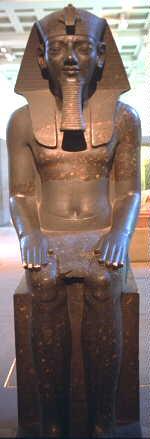 |
Many of the statues in the collection were moved from their original locations by he Italian adventurer G.B. Belzoni. Around the turn of the century most European countries had representatives in Egypt attempting to remove as much as they could. The damage done to the monuments at this time is incalculable. Statues and Obelisks were shipped out in large numbers, and plasterwork and reliefs were removed from several tombs, with the Valley of the Kings being particularly badly affected. No one can visit the tomb of Amenhotep II without being saddened by the large areas of reliefs hacked out by French 'mining speculation'
See more items in the British Museum Gallery

